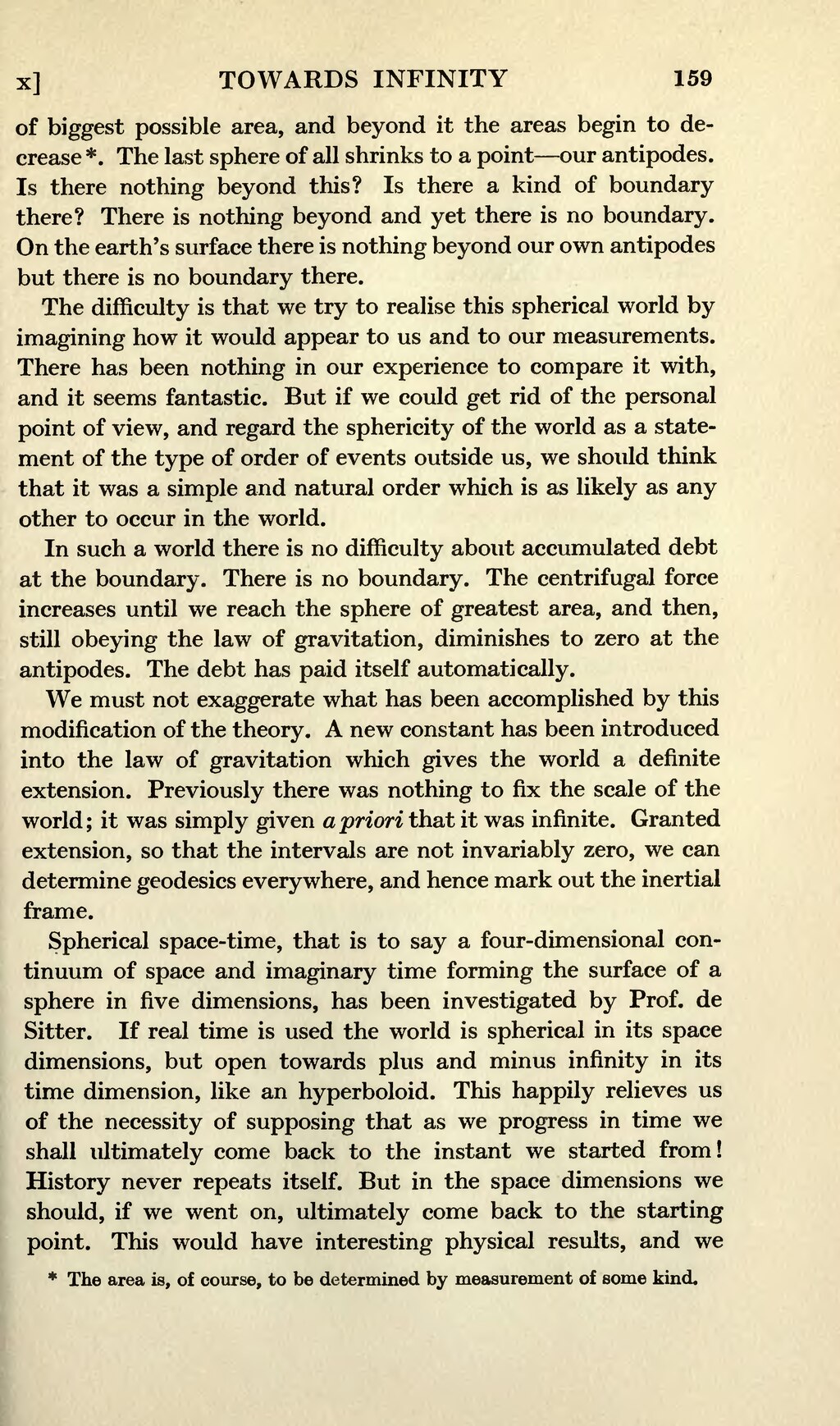of biggest possible area, and beyond it the areas begin to decrease[1]. The last sphere of all shrinks to a point—our antipodes. Is there nothing beyond this? Is there a kind of boundary there? There is nothing beyond and yet there is no boundary. On the earth's surface there is nothing beyond our own antipodes but there is no boundary there.
The difficulty is that we try to realise this spherical world by imagining how it would appear to us and to our measurements. There has been nothing in our experience to compare it with, and it seems fantastic. But if we could get rid of the personal point of view, and regard the sphericity of the world as a statement of the type of order of events outside us, we should think that it was a simple and natural order which is as likely as any other to occur in the world.
In such a world there is no difficulty about accumulated debt at the boundary. There is no boundary. The centrifugal force increases until we reach the sphere of greatest area, and then, still obeying the law of gravitation, diminishes to zero at the antipodes. The debt has paid itself automatically.
We must not exaggerate what has been accomplished by this modification of the theory. A new constant has been introduced into the law of gravitation which gives the world a definite extension. Previously there was nothing to fix the scale of the world; it was simply given a priori that it was infinite. Granted extension, so that the intervals are not invariably zero, we can determine geodesics everywhere, and hence mark out the inertial frame.
Spherical space-time, that is to say a four-dimensional continuum of space and imaginary time forming the surface of a sphere in five dimensions, has been investigated by Prof. de Sitter. If real time is used the world is spherical in its space dimensions, but open towards plus and minus infinity in its time dimension, like an hyperboloid. This happily relieves us of the necessity of supposing that as we progress in time we shall ultimately come back to the instant we started from! History never repeats itself. But in the space dimensions we should, if we went on, ultimately come back to the starting point. This would have interesting physical results, and we
- ↑ The area is, of course, to be determined by measurement of some kind.
